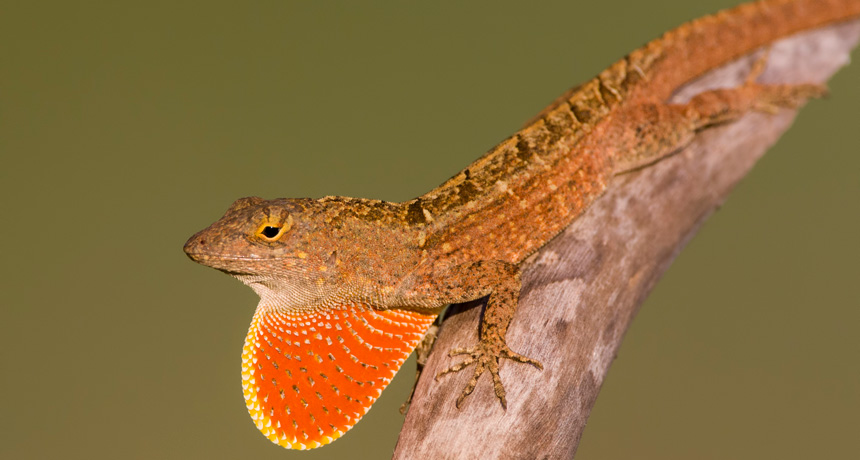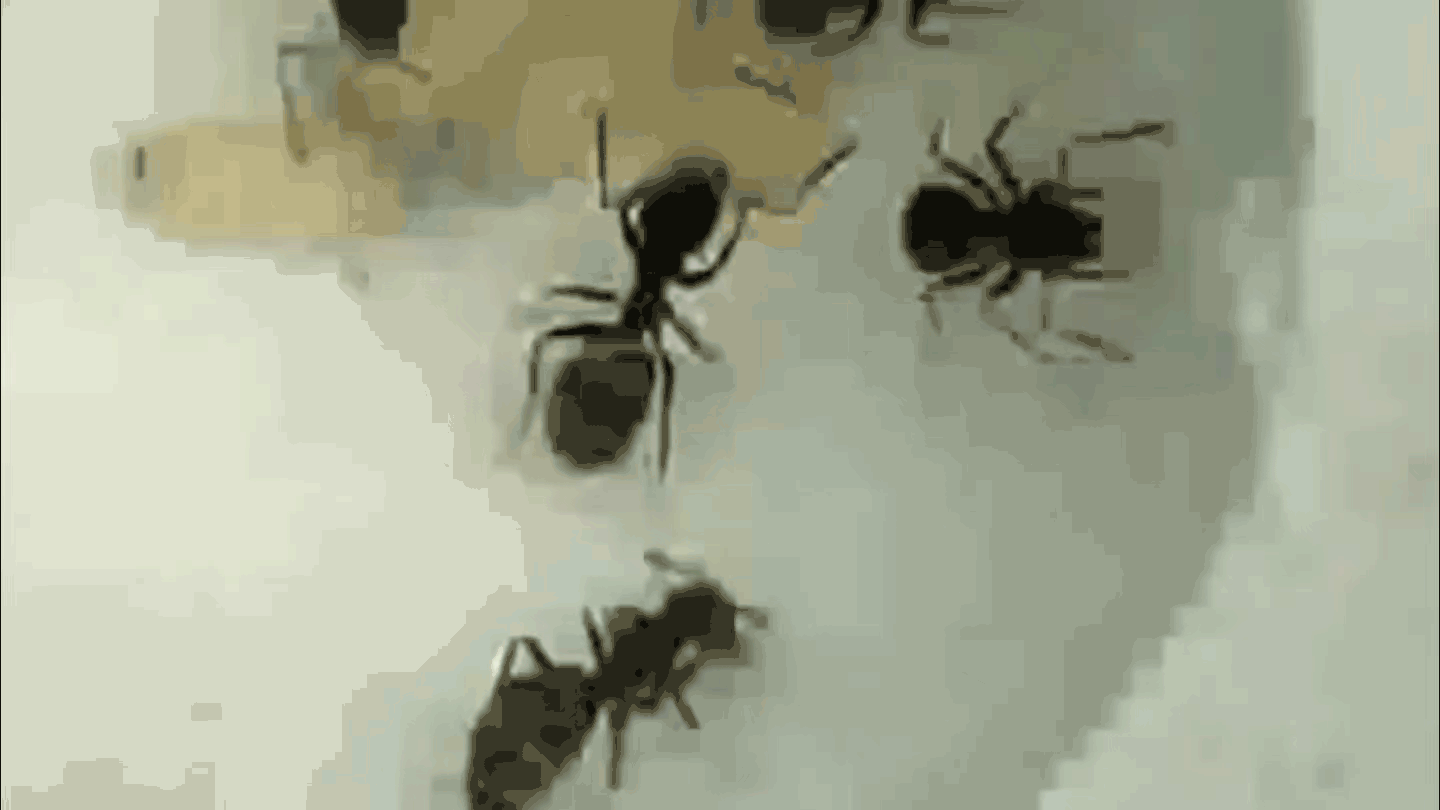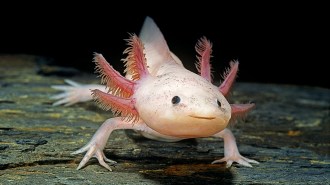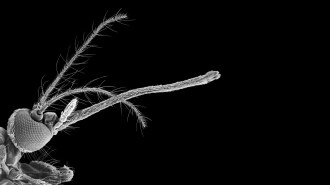Even on remote islands, busy ports mean more invasives
In the Caribbean, trade trumps geographic isolation in the spread of nonnative lizards

SCALY STOWAWAY Islands with thriving trade networks are more likely to be colonized by opportunistic species such as this brown anole (Anolis sagrei), a new study of the distribution of native and nonnative anoles shows.
Neil Losin






